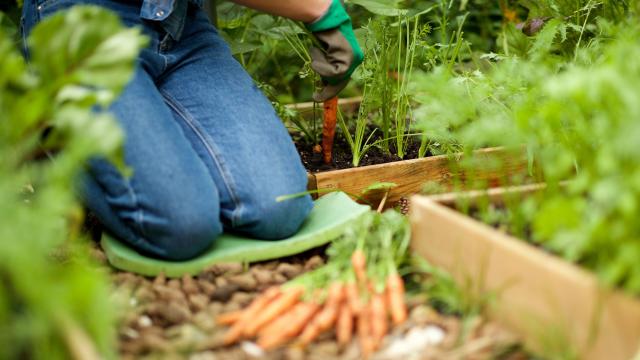The first time you head out to work in your yard or garden, you’ll quickly be reminded how physically demanding it can be. Tending the soil involves a variety of movements and body positions — a lot of bending, lifting, and carrying heavy loads — which can leave you tired and sore at best, and injured at worst.
But indulging your green thumb doesn’t have to mean sacrificing the rest of your body. Use these strategies to protect yourself from gardening aches, pains, and injuries.
Invest in the right tools
There’s a tool for everything, and using the right tool for a specific job can minimise the chance of accidents, injuries, and undue fatigue. Make sure you are using the right tool for the job — don’t try todo a lot of digging with a flat-edged shovel when a pointed shovel will be much easier — and look for ergonomic features like easy grips and extendable handles, which mitigate bending and grip discomfort. Pruners and shears should have a safety lock.
And always use your tools instead of your hands. You may not be able to see debris or sharp objects buried in dirt or tucked in shrubs, and digging or reaching with your hands puts you at risk for injury.
Wear protective gear
Gloves are an essential piece of gear for both gardening and general yard work. They help minimise blisters when using tools, and they protect your hands from any number of risks: bacteria and fungi in the soil, irritants such as poison ivy and thorns, insect and snake bites, and sunburn.
Wear sunglasses or other eye protection, especially if you’re using tools. A waterproof shoe with a thick sole and good traction can prevent you from slipping. And light layers provide protection from both sun and bugs.
Warm up before starting
Take five to ten minutes to warm up your body at the start of each gardening session. A brisk walk around the block and a few gentle stretches (squats, bends, rotations, wrist movements) are a good way to start if you’re able.
While gardening isn’t technically a sport, it is as physically demanding as one, which means you may benefit from some specific training for the muscles and joints you use often. Try out AARP’s strength and stretching routine for gardeners.
Rotate between tasks
Repetitive movement increases your risk of discomfort and irritation, or even an injury. Try to vary your gardening to-do list, and rotate between tasks every 15 minutes or so to avoid blisters and overuse of the same muscles, tendons, and nerves.
Use proper body mechanics
Move smarter, not harder to minimise fatigue and prevent injuries. Carry heavy items close to your body, work from a seated or padded kneeling position (rather than bending from standing), and lift with your legs while keeping your back more or less straight. Avoid too much twisting by moving your feet and squaring your hips and shoulders. Keep your wrists relaxed and neutral rather than bent when gripping tools. Use a wheelbarrow or yard cart to move heavy objects — don’t be a hero — and store items on waist-height shelves.
Also consider planting in waist-height raised beds or vertical structures such as trellises instead of at ground level. This limits how much you have to bend over and makes gardening while seated in a chair or on a stool more accessible. There are even wheeled gardening stools that allow you to roll around without needing to get up and down.
Finally, save time and energy by gathering all of your tools up front and keeping everything organised and within reach when possible.
Take breaks, and remember your basic needs
Don’t neglect your needs as you power through yard or garden tasks. Drink lots of water and wear sunscreen (and other sun protection, such as a hat and long sleeves), and consider working early or late in the day when it’s cooler to reduce the risk of dehydration and sunburn.
Take frequent breaks to stretch or rest — perhaps each time you rotate to a new task? — and remember that you don’t need to tackle it all at once. One 60- to 90-minute session may be plenty for one day, especially at the beginning of the season. Go easy on yourself, and spread the work over several days or a full weekend instead.

Leave a Reply
You must be logged in to post a comment.